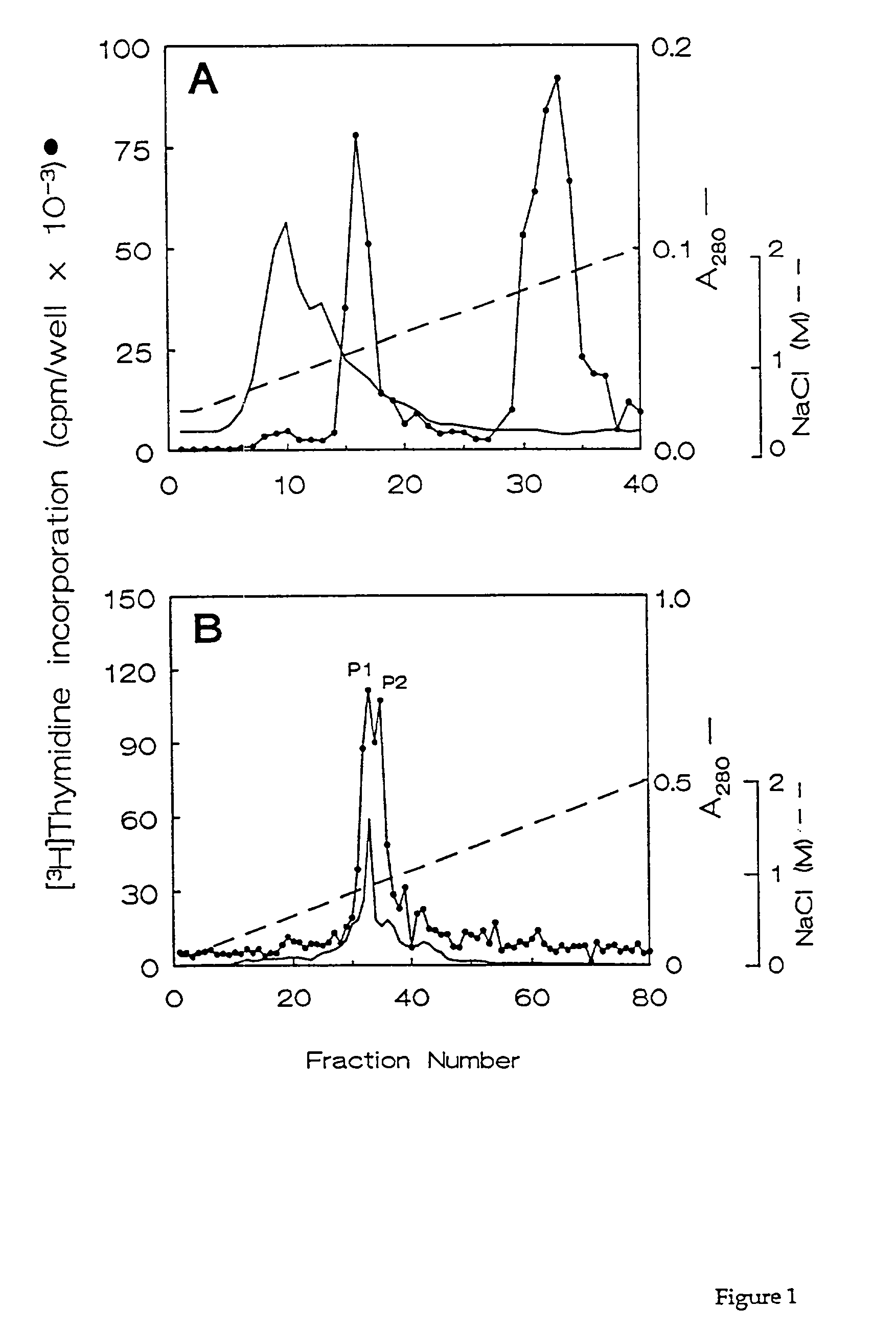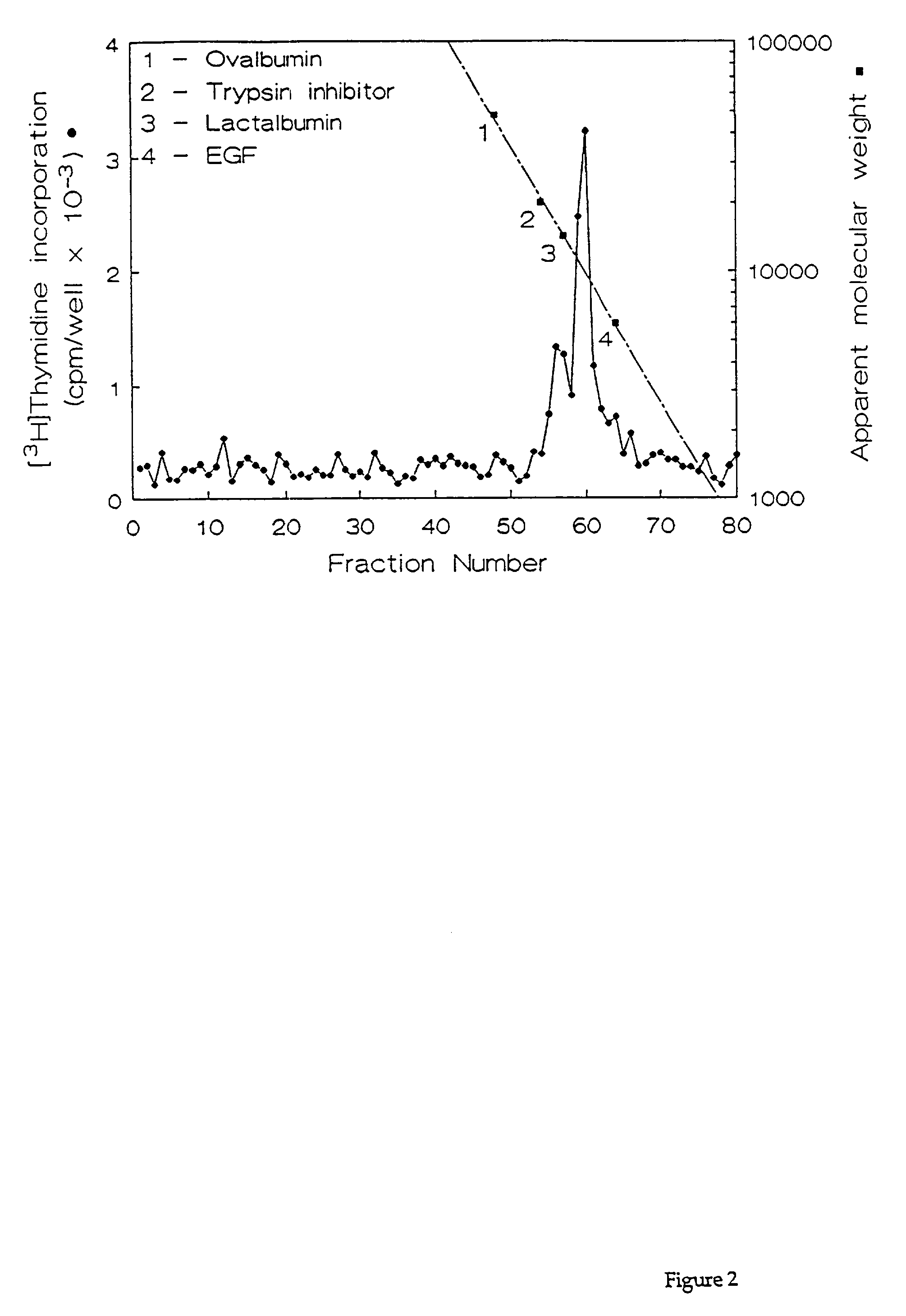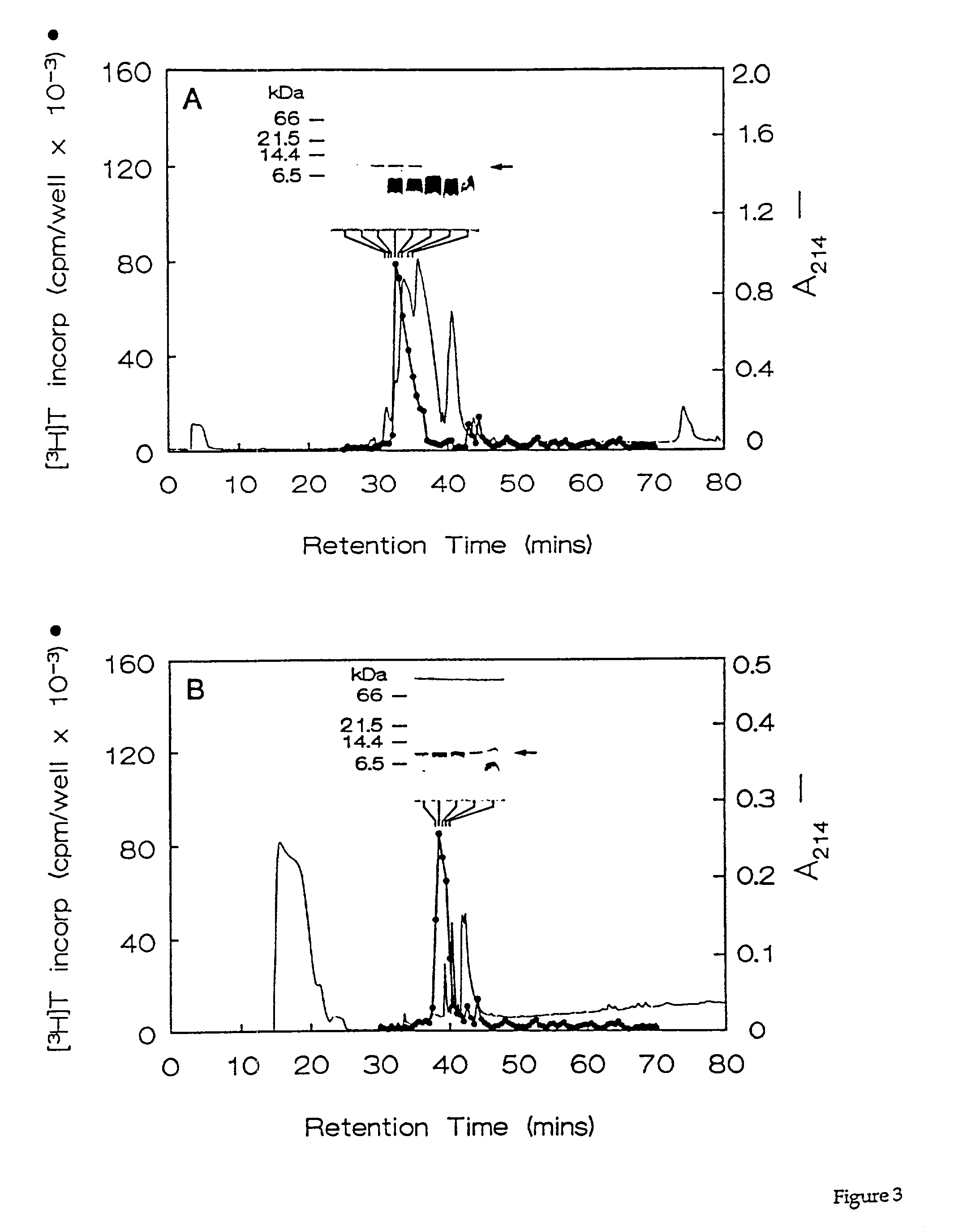Antibodies to heparin-binding growth factor (HBGF) polypeptides
a growth factor and anti-hbgf technology, applied in the field of growth factors, can solve the problem that ctgf alone cannot induce this property in fibroblasts
- Summary
- Abstract
- Description
- Claims
- Application Information
AI Technical Summary
Benefits of technology
Problems solved by technology
Method used
Image
Examples
example 1
Characterization and Purification of HBGF Polypeptides
[0060]Uteri were collected at random from slaughterhouse pigs that were approximately 8 months or less in age. Each uterine horn was flushed with cold (4° C.) phosphate-buffered saline (PBS) to collect uterine luminal components. Growth factor purification was performed on 4-liter pools of ULF obtained from up to 120 animals. Uterine luminal flushings (ULF) were clarified by centrifugation at 13,500×g for 30 minutes at 4° C., and the supernatant was passed through glass wool.
[0061]Four liter samples of clarified ULF supernatant were applied at 4° C. to a BioRex 70 cation exchange column (5×6 cm; Bio-Rad) that had previously been equilibrated in PBS, 0.2 M NaCl. After sample application, the column was washed with 500 ml of PBS, 0.2 M NaCl, and bound proteins were eluted using a 500 ml gradient of 0.2-2 M NaCl in PBS. The flow rate was 3.5 ml / min throughout, and fractions of 10 ml were collected during treatment of the column with...
example 2
HBGF Polypeptide Sequencing
[0069]Fractions containing the HPLC purified growth factors were pooled, dried, and subjected to preparative SDS-PAGE. Proteins in the gel were transferred for 90 min. at 300 mA to a polyvinylidene difluoride membrane using 10 mM CAPS buffer (pH 11). The location of the proteins of interest was determined by staining the blots with 0.1% Coomassie R250 in 50% methanol for 2 min, followed by destaining with 50% methanol, 10% acetic acid. Half of each 10-kDa protein band was excised and submitted for N-terminal amino acid sequencing on a model 470A gas phase sequenator (Applied BioSystems, Foster City, Calif.). Phenylthiohydantoin-derivatives were identified by C18 reverse phase HPLC. A 16-residue sequence was obtained for HBGF-0.8-P1 with an undetermined residue at position 10, and a 12-residue sequence was obtained for HBGF-0.8-P2 with an undetermined residue at position 9 (Table 2). These data showed that HBGF-0.8-P1 and -P2 were N-terminally identical exc...
example 3
HBGF Antibody Production
[0073]Since HBGFs represent microheterogenous forms of truncated CTGF, the relationship of HBGF to CTGF was investigated. The presence of the 10-kDa protein in the starting material was confirmed by Western blotting of unfractionated ULF samples using a CTGF antibody that reacted with HPLC-purified HBGF polypeptides.
[0074]To produce the antibody, a four-branched multiple antigenic CTGF-(247-260) peptide comprising the sequence EENIKKGKKCIRTP (residues 247-260) (SEQ ID NO: 5) was produced on a Synergy 432A peptide synthesizer (Applied BioSystems) and purified by reverse-phase HPLC using a C18 column (0.46×36 cm; Rainin Instruments) that was developed with a 90-min 5-95% acetonitrile gradient in water, 0.1% trifluoroacetic acid. Fractions containing the purified polypeptides were pooled, evaporated to dryness, and reconstituted in sterile water. Two New Zealand White rabbits (rabbits A and B), which had been bled to collect preimmune serum, were injected subcut...
PUM
| Property | Measurement | Unit |
|---|---|---|
| concentration | aaaaa | aaaaa |
| concentration | aaaaa | aaaaa |
| concentration | aaaaa | aaaaa |
Abstract
Description
Claims
Application Information
 Login to View More
Login to View More - R&D
- Intellectual Property
- Life Sciences
- Materials
- Tech Scout
- Unparalleled Data Quality
- Higher Quality Content
- 60% Fewer Hallucinations
Browse by: Latest US Patents, China's latest patents, Technical Efficacy Thesaurus, Application Domain, Technology Topic, Popular Technical Reports.
© 2025 PatSnap. All rights reserved.Legal|Privacy policy|Modern Slavery Act Transparency Statement|Sitemap|About US| Contact US: help@patsnap.com



